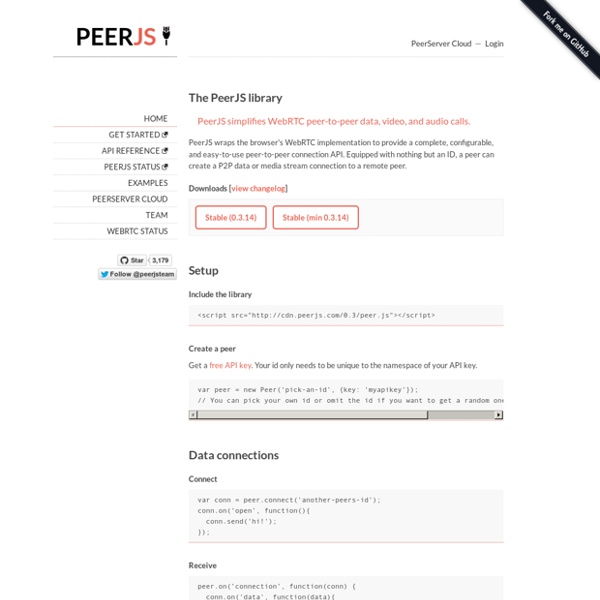



webRTC/webRTC.io Executando Python (ou qualquer outra linguagem) no navegador | State Of The Art Há alguns dias surgiu uma questão muito interessante no StackOverflow em Português sobre a possibilidade de executar uma linguagem arbitrária num browser, assim como é feito hoje com o Javascript. Como poderíamos executar a nossa própria linguagem numa página web? Vamos encarar o desafio e implementar isso na prática! Requisitos Temos dois métodos para incluir código Javascript numa página web. Dentro da tag <script>: <script type="text/javascript"> alert('código javascript executando');</script> De uma fonte externa: A ideia é permitir a inclusão de nossa linguagem da mesma forma. <script type="text/nossalinguagem">... Não estou ainda considerando código inline, como às vezes usado em eventos onclick, onchange, etc. No entanto, existem particularidades na execução de tags <script>: Nossa linguagem deve co-existir com o Javascript numa página HTML, como no trecho abaixo: <script type="text/javascript">var a = 6;</script><script type="text/nossalinguagem"> print(a) # deve mostrar 6</script> <!
SimpleWebRTC.js from &yet Access child iFrame DOM from parent page WebRTC and Games: Pushing the Limits of What’s Possible At Mozilla, we believe in the power and potential of the Web and want to see it thrive for everyone, everywhere. What We’ve Done We’re committed to building the infrastructure needed to keep the Web the most robust platform on the planet. Although its roots have been around for some time, Mozilla’s focus on games is a relatively new initative. We are focused on making Firefox the best game development platform possible. Check out BananaBread. The latest Firefox release includes all of the JavaScript and WebGL updates needed to produce this demo. BananaBread was developed by Mozilla to show our progress in action. The project required very few code modifications to the original game, which demonstrates that porting games to the Web does not have to be difficult. Learn more about Emscripten. New technologies for HTML5 games Here are a few technologies that have landed this year to advance our support for HTML5 games: Firefox for desktops has come a long way in a short time. What’s Next
WebRTC Book Webgl 2D engine WebRTC Solutions Scenarios Click on image for Flash animated presentation. If you on Twitter, please follow @techtionary - we follow back. dummies After doing the story last week on finding “common ground” between SIP and WebRTC as a techexplorer I wanted to know more. One of the last remaining activities, that is difficult to accomplish in a web browser, is the exchange of real time data, such as that necessary for making Voice or Video calls. Here are six solutions scenarios: #1 - Enterprise Architecture #2 – Enterprise Architecture #3 – Multiple Backend Systems #4 – Cloud Provider #5 – Lync Integration #6 - PSTN Off Net Of course your situation may be different, however, what I was most excited about what how WebRTC can seamlessly work with SIP in IP-PBX environments such as Avaya, Cisco, ShoreTel and Lync. Bottom-line – WebRTC is a new game not necessarily a game-changer. Here is the Legend for the terms used in the graphics above. WebServer - Provide HTML and Java Script to the Browser include WebRTC code WebRTC Gateway
JavaScript Quick Start Getting started with Pusher is very easy. However, if you have any questions get in touch. This guide uses the JavaScript client API and a selection of Server API libraries. We also have a guide for our iOS client. Get your free API keys Create an account, and make a note of your app_id, app_key and app_secret. Include the Pusher Client library Include the pusher-js script tag on your page. Open a connection to Pusher You first need to establish a connection to Pusher. var pusher = new Pusher('YOUR_APP_KEY'); Subscribe to a Channel Now you should subscribe to your first channel. Note: more info on choosing channel names is available here. var channel = pusher.subscribe('my-channel'); Listen for events on your channel Now you can define callbacks that bind to events on a channel, coming in via the connection to Pusher: Trigger events from your server In the examples below we trigger an event named my-event to Pusher on a channel called my-channel.
Zingaya Blog | latest news about Zingaya